My new Resolve V8 online training classes have just been released. “Why make online classes aren’t you going to take students from your ICA classroom training?” The answer is that the 2 training models are very different. The classroom is very interactive you get the chance to exchange footage, views and skills with not only me but also your fellow students. The classroom always has a machine between shared between 2 students, and this promotes team building so in some ways is better than having a solo machine.
My new online training lessons are produced by FXPHD. I worked with them on the second term of PHD back in 2007 so was one of the world’s first FXPHD professors. The 10 online classes cover everything from the initial set up of the machine to stereo 3D grading. One of things I wanted to do was show some reasons behind my grading, why do it that way, not just “How to do it”. We filmed the classes over a week in Sydney just after the release of the Version 8 software. This had the advantage of giving me the chance to use the newly supported Avid Artist along with the Wave and BMD Resolve surface. I add my thoughts on the pros and cons of each of these surfacesYou do not need a control surface to follow the classes, and they are just as informative for the Resolve Lite colorist as it is to the experienced Colorist looking to move onto Resolve from another software platform. I enjoyed making the classes and hope there is something for everybody in there. Classes include grading Arri Log C, Epic HDRx, FCP and Avid workflows showing both Avid and FCP timelines, all the Power windows and advanced tracking explained.
Unlike the conventional PHD training series which follow a term structure, this is a new strand called Fast Forward. This means you can download all 10 lessons in one go, so Fast Forwarding your learning. Maybe you have the chance of getting a grading gig but only have 2 weeks to learn the software this will show you how.
Cost is US$199 for all 10 lessons including real footage used in the classes.
Class 1: Various
Getting started with Resolve
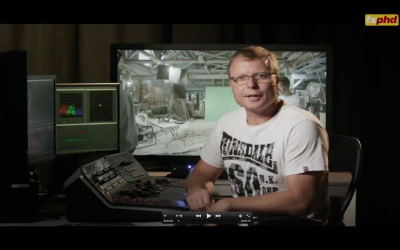 “Hi my name is Warren and I have been a Colorist for over 20 years, 5 years on Resolve, so what’s it all about”
“Hi my name is Warren and I have been a Colorist for over 20 years, 5 years on Resolve, so what’s it all about”
- Introduction to the class. Warren’s history/experience.
- DaVinci Resolve history.
- Loading the software/Dongle/storage.
- Setting the Resolve preferences for storage and control surface requirements.
- Explains the application looking at all the tabs and what they do.
- How to quickly set up a project so you can start to play.
Class 2
How to get images in: Working with Avid and FCP
“We all want to get going and create some great looks but first we need to get our images in and out of Resolve”
- The Browser page, find your material and see how it was shot in the Bowser window.
- The new V8 Conform page.
- Manual Load of images or use an EDL to add to the Media Pool
- Create a small “Looks” timeline while you are waiting for editorial to supply an EDL or XML
- See the Final Cut Pro timeline before exporting an XML. Importing that XML into Resolve, grading the multi level timeline, rendering then exporting a new XML, we go back to FCP with graded pictures.
- Exporting an Avid timeline as an AAF. Opening that AAF brings the media and transitions into Resolve. Grade then render the shots in a structured way so that the shots will re-link into Resolve. Grade, render then re-link back in the Avid.
- New V8 Multi level timeline
- Editing features/controls
- Transitions and grading 2 layers
- How to force conform a shot that will not re-link with material in the Media Pool
- Scene cut detector
Class 3
Nodes/Primaries
 “The Primary controls are the most important Resolve control you will ever use. If you cannot get a great balance to begin with you will find it so much harder to do the cool stuff down the track.”
“The Primary controls are the most important Resolve control you will ever use. If you cannot get a great balance to begin with you will find it so much harder to do the cool stuff down the track.”
- Basic node operation
- The serial node, how it works /connects etc
- Waveform, Vector scope and Histogram.
- How to use the primary controls.
- Auto Color
- RGB mixer
- Offsets and Pot control
- Lumance controls the YUV corrector
- Curves / YSFX
- Soft white clip
- Copying corrections
Class 4
Secondary Corrections
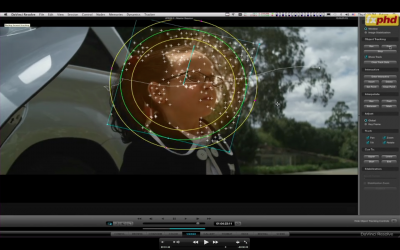 “I will show you why we use them, not just how to make them.”
“I will show you why we use them, not just how to make them.”
- How to make them and why we need them to complement your primary grade
- Fixed 6 vector secondary’s, Just click on a green and change it.
- Chroma light and dark
- How to key using the HSL option
- What the Picker + – keys do
- The new V8 Secondary hue curves
Class 5
Power Windows
“Everything I have ever graded had a product of some sort, either a Ford car in a commercial, a leading actor in a movie, or a famous singer in a music clip. You have to make them stand out because that is what your clients will be looking at.”
- Circle and Linear Power Windows.
- Poly and Power Curve Windows.
Tracking
“The tracker is fantastic the best I have used but what do you do on those occasions when it doesn’t track and you have to manually fix the track”
- Auto Tracking
- How to mix both Auto and Manual tracking.
- Tracking a window off the screen.
- Tracking cars and people.
- How to fix broken tracks with manual interpolation.
- How to animate a shape that has been tracked.
- Image stabilization
Class 6
Advanced Node operation
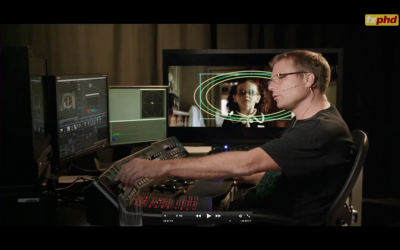 “The real power of Resolve is truly unleashed when you understand all the nodes and what they do. It took me a while to understand the true power of each of the nodes. When you do it unlocks many creative options.”
“The real power of Resolve is truly unleashed when you understand all the nodes and what they do. It took me a while to understand the true power of each of the nodes. When you do it unlocks many creative options.”
- The Parallel node
- The Layer node
- Bringing colors through a wash
- You want that exact original pck shot color coming through your de-saturated cool wash.
- The Layer node priority explained.
- Layer v Parallel nodeswhat is the difference?
- Key Mixer node
- See how to quickly grow a complicated node tree with the Key mixer
- Combining keys to make grading faster
- Breaking and joining links
- PTZR repositioning in the timeline.
- ALL/COL/PTZR why this is important to correctly mark our timelines when doing dynamic changes.
Class 7
Conforming a RED film grading then outputting
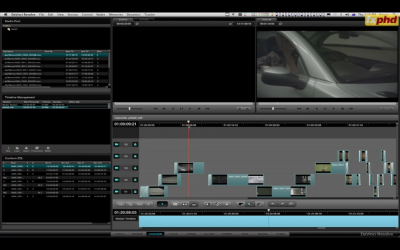 “I always use the Playheads at the start of my session, clients love the interaction of this feature.”
“I always use the Playheads at the start of my session, clients love the interaction of this feature.”
- Class 7 starts by conforming a short sequence shot on the RED camera using anamorphic lenses.
- Changing the aspect ratio in the Media Pool to lose the anamorphic squeeze.
- The render page.
- What formats can we render to?
- Batch request and the render que.
- Real time Proxies and the render cache modes.
- Show wipes and key green screen
- Exporting and importing stills to your session so you can compare grades and also get access to your node tree history.
- Powergrades. Make your own effects library of looks that stays with you in every session.
- Grouping shots to make grading easier
- Playheads lets you see 4 shots on the screen together. Grade your hero shot then see how it looks and plays on the other 3 selected shots.
- Versions is the easiest way of making alternative grades
Class 8
Stereo 3D Grading
“Pirates of the Caribbean, Transformers, Avatar all graded in stereo on Resolve. How hard can it be?”
- Set up your project using footage from both eyes put into Folders L & R
- The Auto matching tools for both the color and geometry differences of the eyes
- The picture alignment tools, Pitch and Yaw.
- The different grading and viewing options for Stereo 3D.
- Using the difference view to judge and change convergence.
- What do you want coming out of the screen plane and what should sit behind it, or on it?
- Will stereo grading make you feel very strange?
Class 9
Grading Film and Digital Material
“Give me a piece of 35mm film shot on a sunny day…quick adjustment and it looks fabulous, not often the case these days. How to get the best out of the new digital formats and what to look out for”
- The pros and the cons of digital formats.
- What controls do we have in Resolve.
- Understanding the RED metadata controls, there are lots of options what should you touch and which ones can you leave alone.
- LUTs. Using the manufacturers and making your own with the Resolve LUT builder
- Canon 5D/7D H.264 files, how much can you push them?
- Red/Epic inc HDRx . How to mix the 2 exposures of HDRx
- Arri Alexa RAW v ProRess 444 in LOG C can the client see the difference, can you!
- Sony F3 REC 709 compared to C -Log
Class 10
Control surfaces
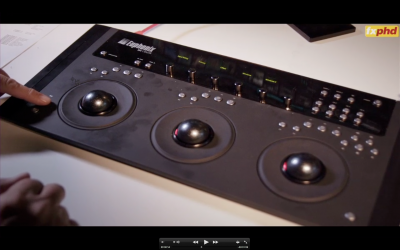 “The surfaces supported by Resolve are all very different, try before you buy and find the one that suits you, I guarantee you’ll find it more fun than grading with a mouse.”
“The surfaces supported by Resolve are all very different, try before you buy and find the one that suits you, I guarantee you’ll find it more fun than grading with a mouse.”
- A brief introduction on what the control surface options are and what my own thoughts are on each one.
- The BMD Resolve surface
- The Tangent Wave
- The Avid Artist
- What the buttons and controls do on each panel.
- Can you customize them, colors feel and sensitivity.
- How easy are they to connect.
- How do I find the feel of the Joyballs and rings
- Where are the shortcuts, on each panel





